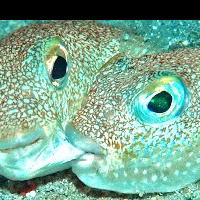Top 10 Amazing NEW SPECIES
Top 10 Erstaunliche NEUE SPEZIES
Las 10 NUEVAS ESPECIES más sorprendentes
Top 10 des nouvelles espèces les plus étonnantes
Top 10 delle più sorprendenti nuove specie
驚くべき新種トップ10
놀라운 신품종 10가지
Top 10 stebuklingų NAUJŲ RŪŠIŲ
Top 10 Novas Espécies Incríveis
Топ-10 удивительных новых видов
十大惊人的新物种
These are the ten most incredible new species of plants and animals discovered in the last year, as chosen by New York’s College of Environmental Sciences and Forestry.
|||ten||incredible|||||||||||||selected|||||||||
|||||||||||||||||として||||||||||森林科学
|||||||||||||||||||||||||||silvicultura
Tai yra dešimt labiausiai neįtikėtinų naujų augalų ir gyvūnų rūšių, atrastų per pastaruosius metus, kaip pasirinktas Naujojoje Jorko Aplinkos mokslų ir miškų kolegijoje.
This feathered dinosaur bridged the evolutionary gap between older ancestors like the T-Rex, and modern day birds.
|пернатый||||||||||||||||
|||connected||||||||||||||
|羽毛の||架け橋となった||進化の||||祖先|||ティラノサウルス|||||
Šis plunksnuotas dinozauras sujungė evoliucinį tarpą tarp senesnių protėvių, tokių kaip T-Rex, ir šių dienų paukščių.
Anzu wylei is similar to a velociraptor in size, but, like a bird, it made nests and sat on its eggs until they hatched, and also had hollow bones and a parrot-like short beak.
Анзу|вилеи|||||велоцираптор|||||||||||||||||вылупились||||пустотелые|||||||
Anzu|wylei|||||||||||||||||||||||||||||||||
|ワイレイ|||||ヴェロキラプトル|||||||||||||||||||||||||オウムのような|||くちばし
|||||||||||||||||||||||chocavam||||oca|||||||
O Anzu wylei é semelhante a um velociraptor em tamanho, mas, como um pássaro, fazia ninhos e pousava sobre os ovos até que eclodissem, e também tinha ossos ocos e um bico curto semelhante ao de um papagaio.
This coral-like tuber plant -- scientifically named Balanophora coralliformis -- is a parasite (meaning it eats other plants instead of getting its energy from photosynthesis).
|||клубень||||Баланофора|кораллообразная|||||||||||||||
|||tuber plant||||Balanophora|coral-like||||||feeds on|||||||||
|サンゴのような根茎||||||バラノフォラ|珊瑚状|||寄生植物||||||||||||
It’s found in the Mt.
Mingan region of the Philippines.
Минган||||
Mingan||||
Cebrennus rechenbergi is a spider that uses an energy-conserving cartwheel technique to propel itself toward threats.
Цебреннус|Рехенберга||||||||сохраняющей энергии|колесо на руках|||движется к||в сторону|угрозы
Cebrennus|Cebrennus rechenbergi|||||||||cartwheel||||||
セブレナス|レヒェンベルギの||||||||エネルギー節約|バク転|||推進する|||
||||||||||rodopio||||||
In the deserts of Morocco, where it lives, a lack of places to hide and high temperatures makes running away a bad option.
This tiny sea creature looks like a plant, but the Dendrogramma enigmatica is actually a multicellular animal with a mouth at the end of its “stem.” It seems to be related to jellyfish or anemones, but it’s also evolutionarily different enough that it could be a whole new phylum.
||||||||||Дендрограмма|загадочная||||многоклеточное||||||||||стебле|||||||||анемоны||||эволюционно||||||||||тип
||||||||||Dendrogramma enigmatica|enigmatic species||||||||||||||stalk|||||||||anemones|||also|||||||||||group of organisms
||||||||||デンドログラマ|||||多細胞||||||||||茎|||||関連している||||||||||||||||||門
|||||||||||||||||||||||||caule|||||||águas-vivas||||||||||||||||filo
What makes the Deuteragenia ossarium special is brilliant engineering.
|||Деутераг|оссиарий||||
|||second generation|ossuary||||
|||||||素晴らしい|
|||Deuteragenia|||||
It lays its eggs one each in separate cells formed in hollow stems.
Not only does it kill a spider and drop it in each cell as nourishment for her young, but she completely walls off the end of the stem with the bodies of dead ants, creating a chemical barrier that hides the fact that it’s the front door to her precious nest.
|||||||||||||||||||||||||||||||||||||||||||||||||大切な|
This little frog in Indonesia is one of a kind.
Of the more than 6,400 species of frogs on our planet, the Limnonectes larvaepartus is the only one that gives birth to live tadpoles.
||||||лягушки|||||Лимнонектес|Лимнонектес||||||||||головастиков
|||||||||||Limnonectes|live tadpoles||||||||||tadpoles
||||||カエル|||||リムノネクテス|||||||||||オタマジャクシ
||||||||||||||||||||||os girinos
Phryganistria tamdaoensis gets its name from the beautiful Tam Dao National Park in northwestern Vietnam, where this giant stick insect had gone undiscovered until now.
Фриганистрия|тамдаоэнсис|||||||Там|Там|||||||||||||||
stick insect|Tam Dao|||||||beautiful|Tam Dao|||||||||||||||
|||||||||||||||||||inseto|||||
This sheds light on just how we’ve left to go.
|освещает||||как|мы|||
|明らかにする||||||||
|lança||||||||
Это проясняет, насколько много мы еще не изучили.
这让我们看到我们还有很长的路要走。
Of the 12 million total estimated species that exist in the world, we have discovered and named just 2 million, or 16%.
Из 12 миллионов предполагаемых видов, существующих в мире, мы открыли и назвали лишь 2 миллиона, или 16%.
在全球估计存在的1200万种生物中,我们只发现并命名了200万种,或者说16%。
This new species of sea slug is a beauty of the deep living in the waters off the coast of Japan.
|||||улитка|||||||||||||||
|||||ウミウシ|||||||||||||||
|||||lesma|||||||||||||||
Этот новый вид морского слизняк – это красота глубин, обитающая в водах у берегов Японии.
这种新的海兔是一种生活在日本海岸水域的深海美景。
The Phyllodesmium acanthorhinum appears to glow blue, red and gold when photographed.
|Филлодесми|аканториниум|||||||||
|Phyllodesmium|acanthorhinum|||||||||
|フィロデスミウム|アカントリヌム|||||||||撮影された
With its rose colored spikes, the Tillandsia religiosa has long been used to decorate elaborate nativity scenes in remote parts of Mexico, but scientifically it had gone undiscovered, until now.
||||шипы||Тилландсия|религиозная|||используется||||сложные|рождества||||||||||||||
||||||Air plant|religiosa||||||||||||||||||||||
||||スパイク|||||長い|||||精巧な|降誕|シーン|||||||||||||
|||||||||||||||natividade||||||||||||||
The bromeliad grows on cliffs at altitudes between 6,000 and 7,000 feet.
|бромелиевая||||||||
|a type of plant||||||||
|ブロメリア||||||||
||||penhascos|||||
For 20 years the cause of these geometric designs on the seafloor was a mystery, until their designer was discovered, a subspecies of Pufferfish called Torquigener albomaculosus.
||||||||||||||||||||подвид||фугу||Торкигенер|Торкигенер
||||||||||ocean floor||||||||||subspecies||||Torquigener|white-spotted pufferfish
||||||幾何学的|||||||||||||||||||
||||||||||fundo do mar||||||||||||bodião|||
What looks like an underwater crop circle is actually a nest that minimizes ocean current to protect eggs buried in the center.
||||||||||||минимизирует|||||||||
Thanks for watching.
Leave a comment below about which new species is your favorite.
And if you enjoyed this video, hit that like button to help it spread.
You can watch more TDC by clicking the video on the left to see how climate change is causing unpredictable changes in the habitats of animals around the world; or the video on the right to see a possible plan for wind power to stop deadly hurricanes, while powering the entire United States.
||||The Daily Climate||||||||||||||||||||||||||||||||||||||||||||||||
And you can take us up on our offer for a free audiobook, like Kristin Ohlson’s, The Soil Will Save Us: How Scientists, Farmers, and Ranchers Are Tending the Soil to Reverse Global Warming..or any other book.
||||||||||||||Кристин Ол|Кристин Оул||||||||||||ухаживают за||||||||||
||||||||||||||Kristin Ohlson|Ohlson's book||||||||||ranch owners||||||||||||
|||利用する||||||||||||||||||||||牧場主||||||||||||
It’s linked below.
For my co-producer, Brendan Plank, here at The Daily Conversation, I’m Bryce Plank.
We’ll leave you with the wise words of the naturalist and proud Californian John Muir who said, “When we try to pick out anything by itself, we find it hitched to everything else in the universe.”
|||||||||натуралист|||||Мюир|||||||||||||||привязано||||||
|||||||||nature lover|||||Muir|||||||||||||||||||||
|||||||||博物学者||||||||||||||||||||結びつけられた||||||
|||||||||||||||||||||||||||||ligado||||||

